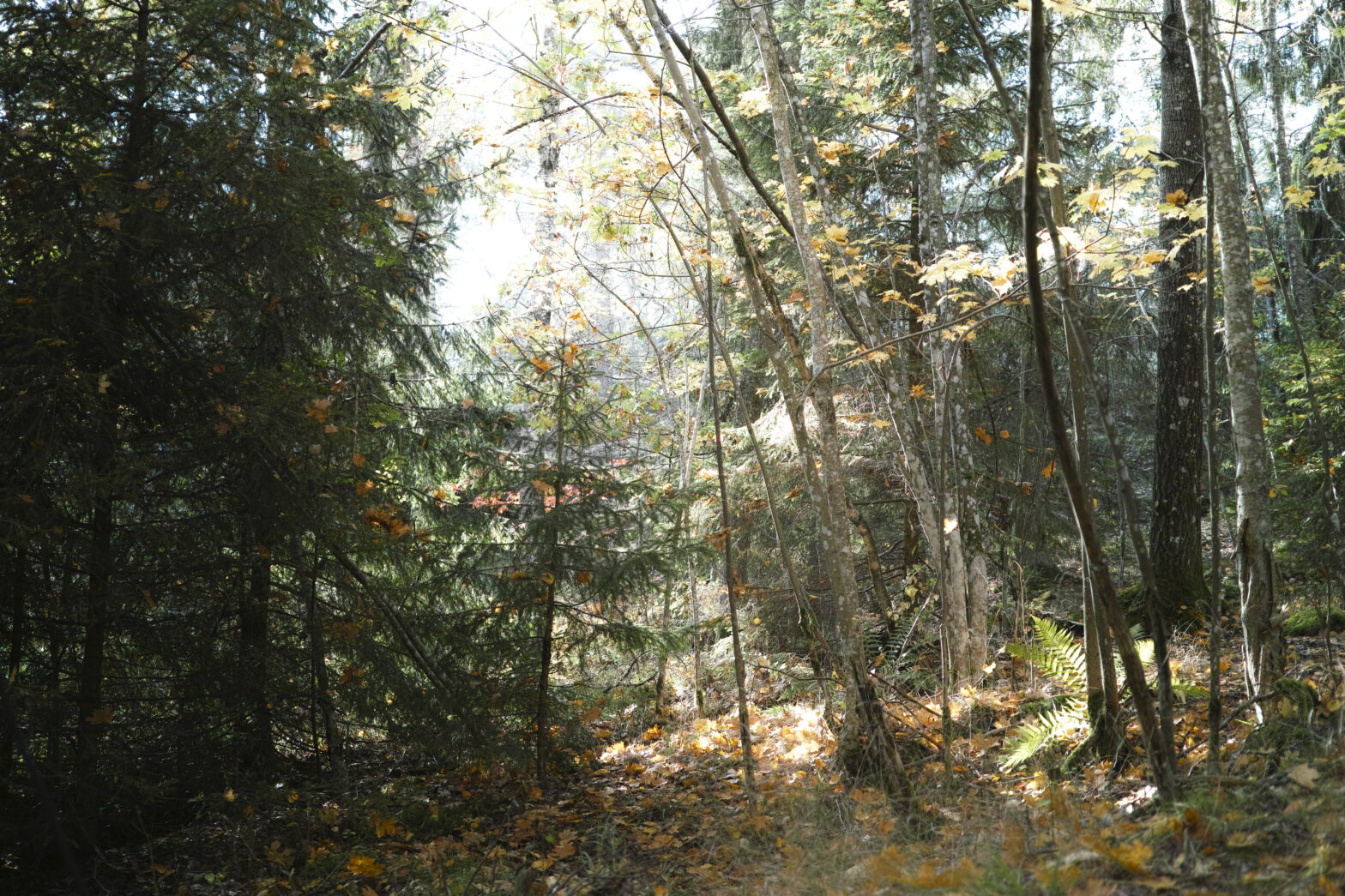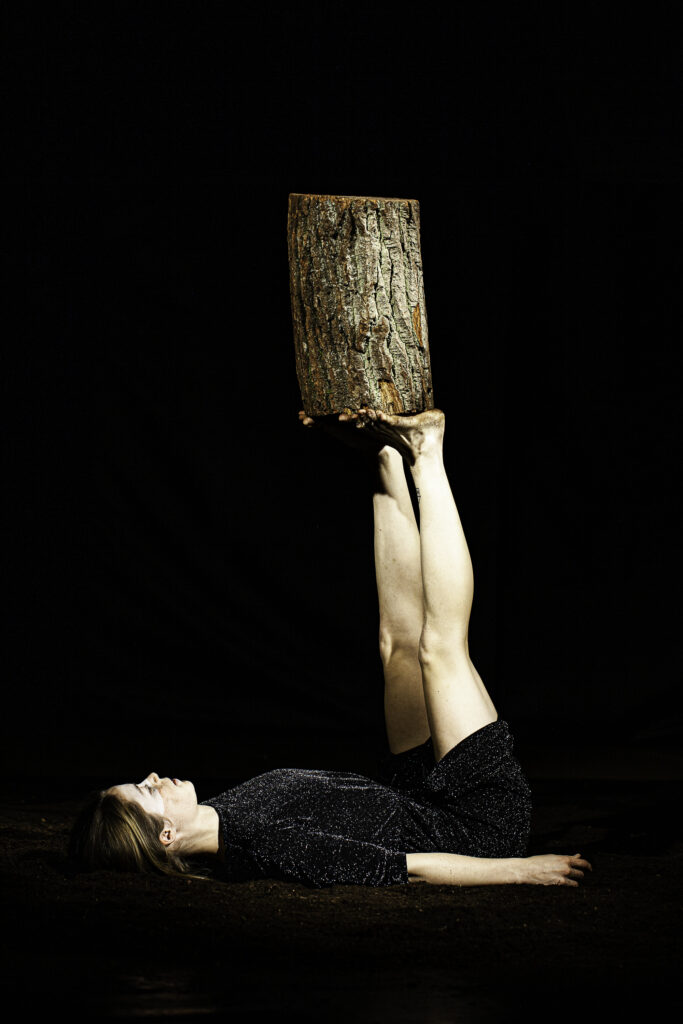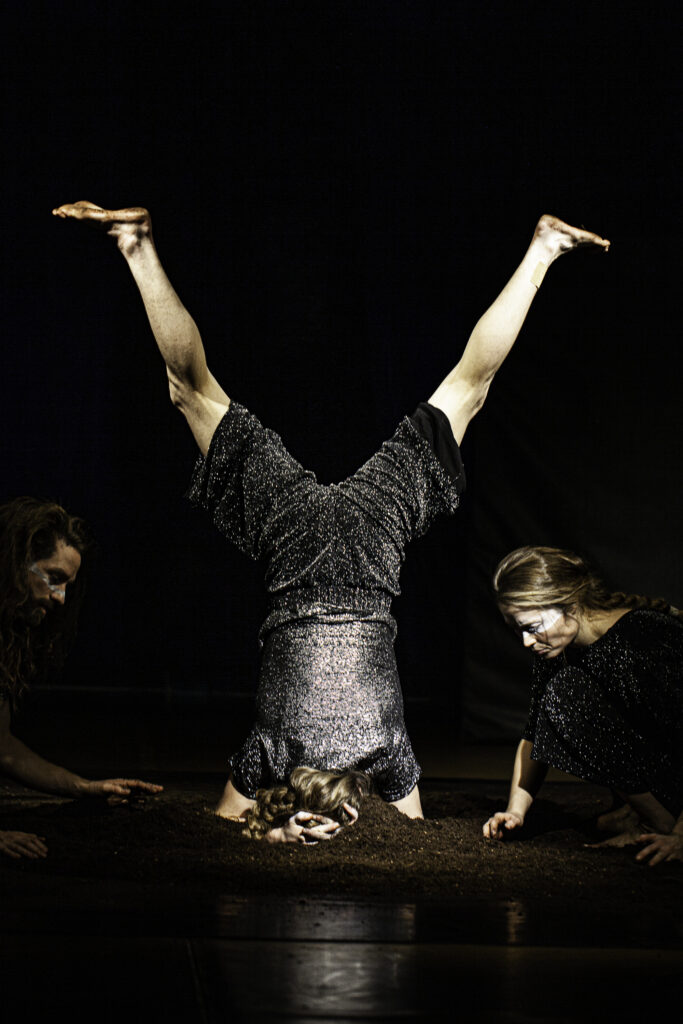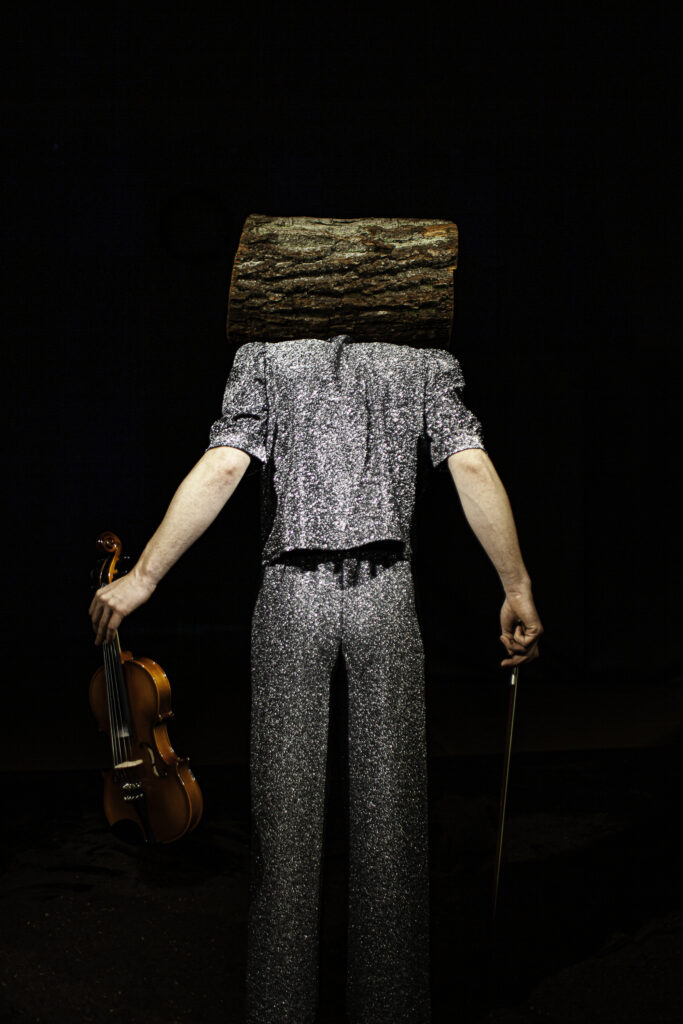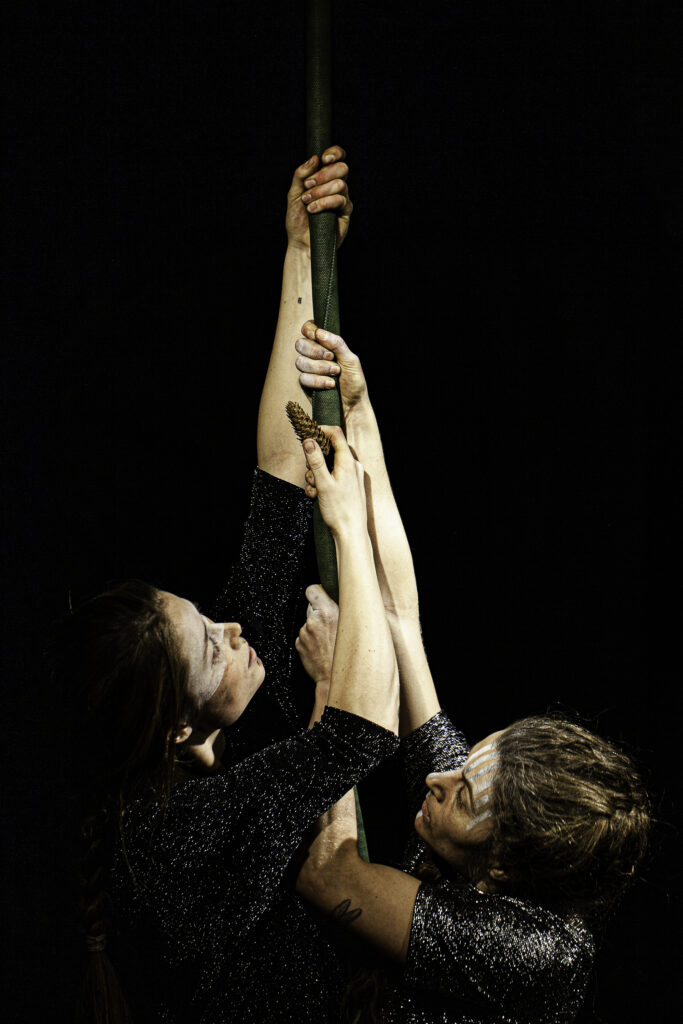To the fiddle’s dreamy and playful tones, we explore the height, the earth – and the depth. How long are the roots of the tree? Where do they go? Is there a beginning?
Imagination and curiosity
We wanted to meet children at the age 6-13 and share our curiosity and fascination of the magnificent forest with them. To let the curiosity of exploring nature be our common ground to meet with the children.
We believe that you take care of what you are aware of and concerned about. At the same time, we also want to show that there are many ways to think, learn, exchange and discover.
Our own curiosity about trees and forest was our starting point, and from the fun-facts we gathered, we composed a show.
Artistic goal
Below the earth’s surface there is a whole world of roots and fungi, as big as the one above the earth. This community of trees, fungal spores, parasitic trees and roots, there may be many who have heard of, but what do we really know? The forest is endless. The trees grow like large families, trees as high as skyscrapers with several thousand inhabitants – ants, beetles, birds and squirrels. How old can a tree get? Can the trees really talk? If so, do not the stones get tired of listening to wooden gossip?
We want to create curiosity for our home – the earth. Open the door to a new world of reflection. Invite into a wondering universe of questions and poetry. A both quiet and playful children’s show about the everyday life of the forest.
In the performance we use text, music, acrobatics and play. Movement and words are intertwined in a peculiar way in meeting the young audience, who can relate to a world where the small things in life can lead to exciting adventures.
The starting point is a pile of soil, a stump, a rope, a fiddle and a cone. What does it take for a cone to become a tree. Does it even know what to do? We are in a world where anything is possible. Hair-raising facts about how the ants milk their aphid colonies, about trees that farts and about how old trees can become, have become part of the story of the forest. The audience is also involved when we try to find out which animals like to climb trees and whether the trees can talk.
Inspiration
Important inspiration is, among other things, the book ”The Secret Life of Trees” by Peter Wohlleben, and several documentaries about mycorrhiza that connect the underground world. Also author and historian David Attenborough, and especially his work with ants (David Attenborough and the empire of ants), have contributed to many impressive and strange facts.
Means
Rope
The basis of the rope artists’ expression is to climb and play upwards. It is associated with the feeling, the joy and the freedom of climbing a tree. The love you can feel for your favorite tree and the memories from a time when you climbed really high. Two artists in a rope create a dynamic and playfulness we hope children (and adults) can recognize themselves in, or be inspired by. Movements and positions go from being acrobatic tricks to becoming a tool in a story.
Fiddle
A fiddle is created from wood, and in many ways it is the sound of a tree we hear when the bow slides over the fiddle strings and the vibrations resonates out into space. A fiddle can express poetic lasting emotions and in the next second create a firework of a party! In traditional playing style, the rhythm is played with the foot stomping at a marvelous pace that propels us forward. The sound of feet against the ground. The sound of earth.
We want the audience to experience the acoustic sound, without it being amplified through a microphone. It creates a raw, unfiltered, experience. A fiddle player is movable and not locked in a given position by his instrument. This enables the musician to move in the stage room, in a dynamic playfulness, where all three artists are in the same world.
Text and speech
The meeting between words, movement and music creates a place where poetry, information and play can meet. The words provide an opportunity to deliver both factual knowledge and to add an extra dimension to the movements on stage.
Pair acrobatics
We use simple and playful pair acrobatics in the performance. We form living animalistic sculptures that are built up and detached from each other. An easy way to illustrate what we say. The sculptures are easy to make and we hope the audience will be inspired to try them for themselves.
Scenography and props
All of the scenography and props are organic materials that can be found in the forest. We want the public to smell the forest when they enter. All scenography is easy to find right outside the house, but is magical in the meeting with the artists, the audience and the stage.
When the audience leaves the performance, they will see precisely these objects that were staged as scenography: Soil, seeds, cones, trees. Objects that after the performance can tell stories and be references. We want to leave behind memories, memories related to objects that are accessible to everyone.
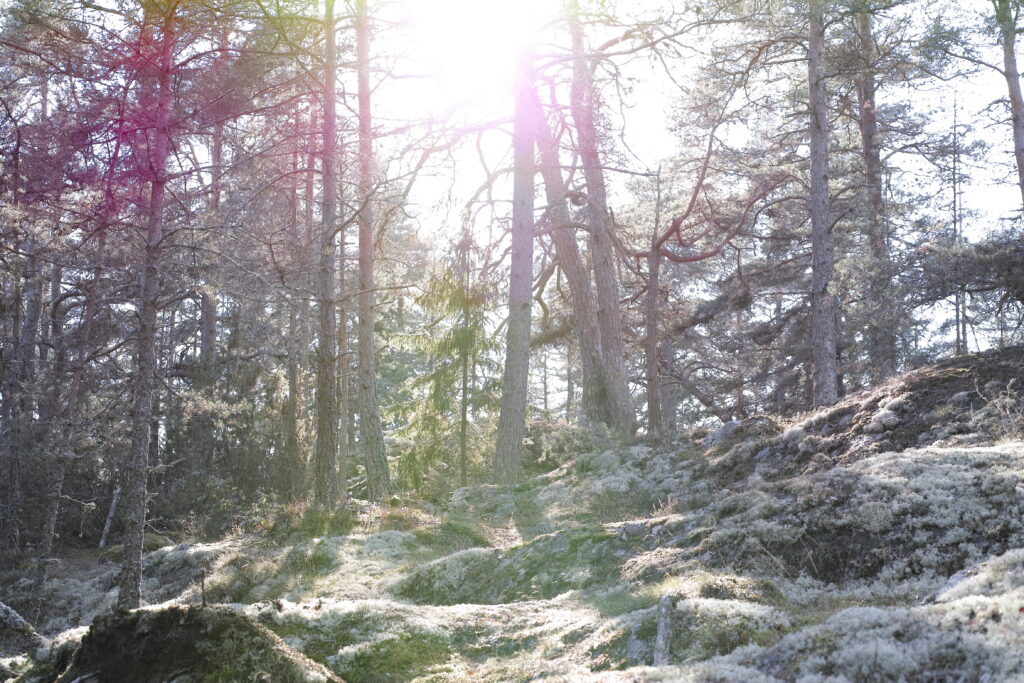
”If you had been a spruce tree… With your head down and your feet up. Then your hair had turned into roots, your legs into branches with leaves of all colors and the rest of your body into a huge thick trunk, with moss on it. Underground, the roots had stretched out toward each other, as if to talk together, so that they could share secrets deep down in the depths”

